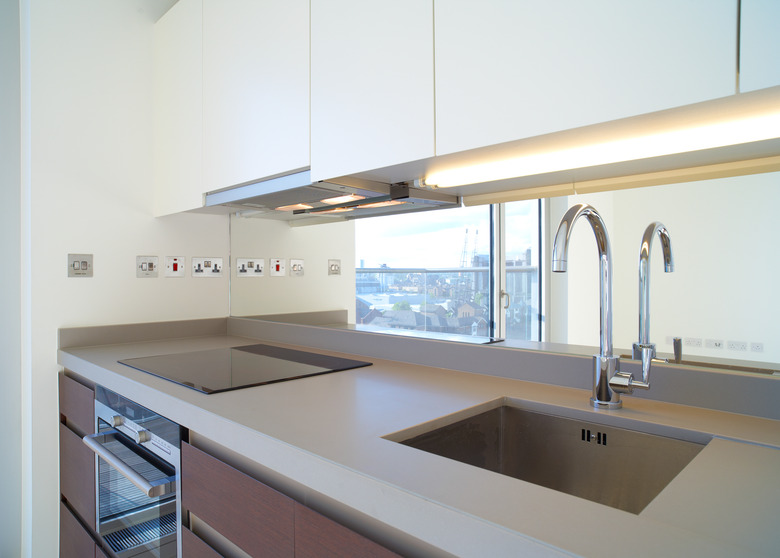How To Cut Plastic Fluorescent Light Covers
When you're shopping for plastic covers for fluorescent lights, it's rare to come across one that's exactly the size you need. Flat panels come in standard sizes, but fixtures don't always correspond to those sizes, and your only option is to buy one that's larger than you need and cut it to size. Not even replacement wraparound fluorescent light covers can be trusted to fit, and you may have to cut one to length.
Since you can cut plexiglass and acrylic with power tools, you might be tempted to do the same to cut your plastic fluorescent light covers. You might be able to get away with it without causing any damage, but it's far safer to use hand tools. Don't worry, though, because even without power tools, the job is easy.
How to Cut Flat Panels
How to Cut Flat Panels
You may have purchased a 2-by-4 fluorescent light replacement lens and found that to make it fit, you have to trim an inch from one side and one end. All you need to do this safely and cleanly is a utility knife or, even better, a scoring tool, which you can buy for less than $5. You'll also need a tape measure, straightedge, clamps and a large flat surface on which to work. Here's a sample procedure:
- Use the tape measure to make marks on both ends of the panel at the right distance from the edge, then align the straightedge with the marks and clamp it down.
- Run the knife or scoring tool five or six times along the straightedge, making an increasingly deeper score line.
- Release the clamps and move the panel so that the line coincides with the edge of the work surface.
- Bend and break the offcut along the line.
The procedure is similar to cutting glass, except that it takes several passes with the blade to make the cut deep enough for the panel to break.
Cutting Wraparound Diffuser Fluorescent Light Covers
Cutting Wraparound Diffuser Fluorescent Light Covers
You can't score and break molded light covers because that technique only works for flat surfaces. You might be tempted to cut a wraparound light cover to the proper length by using a power tool, such as a circular saw or jigsaw. Your chances of success using a jigsaw go up if the blade has a diamond grit edge or at least 18 teeth per inch (TPI). If you use a circular saw, some pros recommend installing the blade backward to minimize chipping.
The safest and surest way to cut replacement wraparound fluorescent light covers is to use a hack saw. Set the cover on a flat surface with the open end down, mark the cut line with a pencil and hold the cover securely with one hand while you cut with the other. Press down a little to prevent vibrations and movements that could cause saw chattering and possible breakage.
Making Very Thin Cuts
Making Very Thin Cuts
The cutting procedure can be troublesome if you have to trim less than 1/2 inch from the side of a panel because the offcut is too thin to break off. In this case, a power tool might be your best bet, but if you use a circular saw, remember to install the blade backward. It's essential to support the edge you're cutting by holding it flat against the edge of the cutting surface or, if you can't do that, placing a 2X4 under the edge to support it.
You can use the same technique to cut a thin piece off the end of a wraparound diffuser, but it's probably just as easy — and definitely safer — to use a hacksaw.
